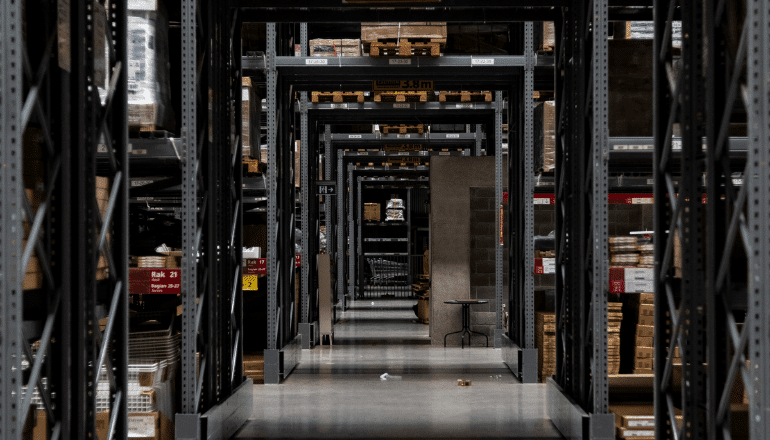Online retailers can claim a few advantages over brick and mortar merchants. To be more specific, brands who sell online …
- Can reach a wider audience
- Don’t have to maintain a physical storefront
- Have the ability to conduct business from virtually anywhere
But e-retailers also have one major challenge most brick and mortar companies don’t: shipping.
When a shopper goes to a store, he or she walks out of the door with their purchase that day. No waiting, no extra fees beyond sales tax. Only an itty-bitty, teeny-tiny number of online retailers can provide that same experience. The vast majority have to figure out a way to make the added step of shipping so painless, shoppers are willing to wait for their purchase.
Now, the easiest way to do this is to offer free shipping. Unfortunately, free shipping simply isn’t an option for every retailer. But a close runner-up is flat-rate shipping. Take a look at the ins and outs of flat-rate shipping and see if this approach makes sense for you.
Flat-Rate Shipping Fundamentals
Unlike variable rate shipping which uses order weight, dimensions, or destination to determine shipping charges, in a flat-rate shipping model, you charge the same amount to ship every purchase — regardless of an order’s contents.
Keep in mind that because you’re charging the same fee for every order, there will be times where what the customer pays will be less than what you pay the carrier. However, as long as you’ve accurately calculated the best rate for your brand, you’ll make up that lost revenue on smaller shipments and your shipping costs will balance out.
Don’t feel as if you’re stuck with one rate indefinitely. If for some reason your shipping costs go up, you can certainly adjust the rate to account for the increase. Just be sure that any mention of your shipping fees on your website, social media, or marketing communications is up-to-date. A consumer will be irritated if he or she sees “£5.00 Shipping on All Orders” in a Facebook ad but then is charged £6.50 for shipping once they get to checkout.
Flat-Rate Shipping: The Good
Larger orders. If adding more to the shopping cart increases the cost of shipping, a shopper may decide to keep their purchase smaller. But if they know the shipping fees remain the same no matter how many products they buy, they’ll likely feel more comfortable with making a larger purchase.
No unpleasant surprises. Online user experience research firm, Baymard Institute, found that the average worldwide cart abandonment rate is nearly 70%. And according to a study by Statista, more than half of all U.S. consumers say the reason they abandoned their cart is unexpected costs. With flat-rate shipping, however, shoppers won’t be shocked by their order total.
Attractive value proposition. While free shipping may not be on the cards, the ability to offer flat-rate shipping can still be a big draw for shoppers. U.S. online retailer Overstock.com has advertised its flat-rate shipping for years. And considering the company reported $1.8 billion USD in revenue in 2016, the approach seems to be working.
Flat-Rate Shipping: The Not-So-Good
Discourages smaller orders. Just as flat-rate shipping can persuade some consumers to spend more, it can also have the opposite effect on shoppers looking to make a smaller purchase. If a customer’s order totals £25.00 and shipping is £5.00, they’ll likely abandon their cart instead of paying the additional 20%.
Requires considerable research and analysis. Your shipping rate can’t be chosen arbitrarily. It must be calculated based on the average shipping costs for previous orders. If you don’t do your research, your shipping rate may be too low (which impacts your profit margins) or too high (which discourages shoppers).
Not ideal for every brand. Since flat-rate shipping is based on average shipping costs, it may not be appropriate for a retailer whose products have substantially different weights and/or dimensions. For example, if you sell electronics, you’ll end up charging shoppers the same price to ship a tablet or a TV — even though what you pay to ship the latter is quite a bit more.
Free Shipping and Flat-Rate Shipping Hybrid
If you have your heart set on offering free shipping, we understand. It’s a huge motivator for shoppers. When asked what would make them shop online more, nine out of ten participants in the Walker Sands’ 2016 Future of Retail Study said free shipping was their number one motivator. And nearly half of all U.S. consumers say they prefer to shop with brands that provide free shipping.
You may not be able to offer free shipping for every order but you can create a free/flat-rate hybrid shipping strategy. For example …
- Treat your first-time customers to free shipping, and then apply a flat-rate to future purchases.
- Pick a few of your most popular products and provide free shipping on only those items.
- Give free shipping to shoppers in your country but charge a flat rate for international orders.
- Offer free shipping to customers after they’ve reached a fixed dollar amount — for example, “Spend Over £50 and Receive Free Shipping”.
- Include free shipping as part of a customer loyalty program.
In a perfect world, online retailers would have all the resources they need to provide same-day shipping at no cost. But alas, we just aren’t there yet. On the plus side, as long as you can offer a positive experience not only while the customer shops but also after they click “Place Order”, you can make them forget Amazon even exists. (OK, that might be a bit of an exaggeration. But at the very least, you’ll encourage them to shop with you again).




